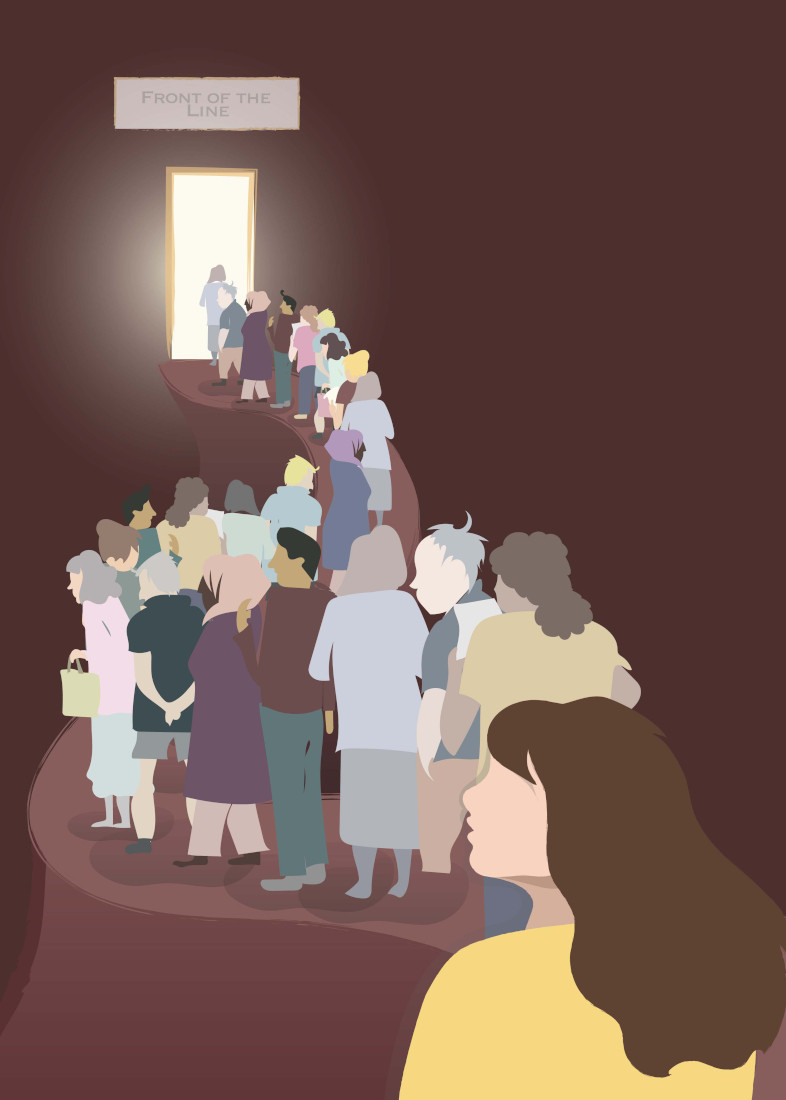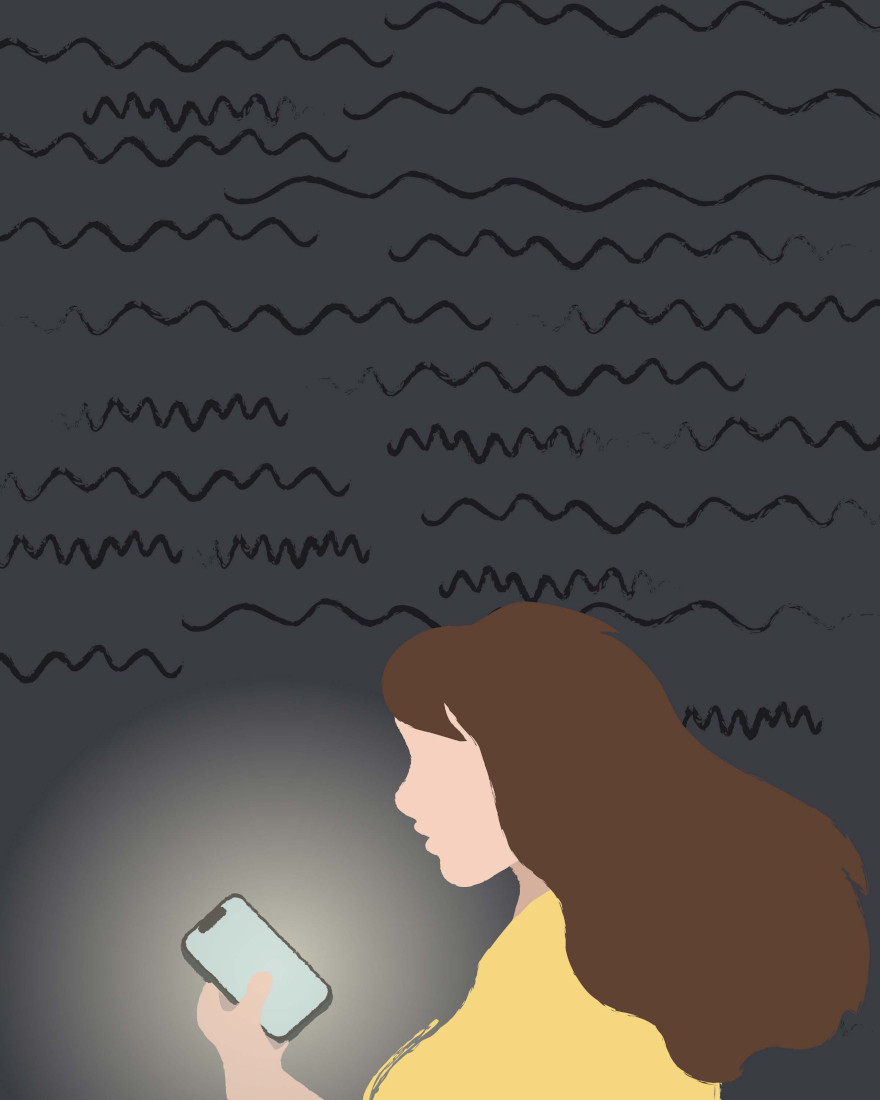How long is too long?
Wait times for mental healthcare in Manitoba need to addressed

A significant amount of this data was sourced before the COVID-19 pandemic, but it can be quite helpful when identifying strengths and weaknesses within Canada’s mental healthcare system.
The Mental Health Commission of Canada indicated in a report from 2011 that “in any given year, one in five Canadians experience a mental illness or addiction problem.”
Although these are pre-pandemic statistics, and we are unlikely to see updated information for another few years, it does lead to a big question: If people require mental-health services and could not receive them before the pandemic, how has the pandemic now affected the number of people with mental-health and substance-use disorders?
Mental-health treatments can’t wait
One in 10 Canadians recently had thoughts or feelings of suicide, according to a national survey created and released in late 2020 by the University of British Columbia and the Canadian Mental Health Association (CMHA). This is an increase from “six per cent in the spring and 2.5 per cent throughout pre-pandemic.”
The pandemic has proved that incorporating virtual therapies and programs can help those who could not access them before.
“Before the pandemic, we didn’t have a virtual platform,” Lori Peters, a counsellor in the Provincial Eating Disorder Prevention and Recovery Program at Women’s Health Clinic (WHC), says. “It is incredible that now anyone in Manitoba, if they have access to the technology, can access our programs. Accessibility is crucial to help those in surrounding communities.”
However, referral to a specialist can take a long time.
The Fraser Institute documented in their 2021 Waiting Your Turn report that “specialist physicians surveyed report a median waiting time of 25.6 weeks between referral from a general practitioner and receipt of treatment – longer than the wait of 22.6 weeks reported in 2020.” For those in Manitoba, the average waiting period is 31.5 weeks.
These statistics are generalized for all medical treatments. For example, when looking at Manitoba’s psychiatry waiting list, patients would possibly wait 5.5 weeks after asking their general practitioner for a referral to a specialist. On top of that, patients would wait another 18.5 weeks between seeing a specialist and receiving treatment. That is 24 weeks between seeking help and finally receiving treatment.
The average wait time in 2020 was 12.9 weeks between seeing a specialist and receiving treatment.
According to this same report, programs in Manitoba that have the longest wait are eating disorders, housing and assertive community treatment, all with a general waiting period of 36 weeks.
Early intervention isn’t currently feasible
If someone in Manitoba seeks information about possible treatments for an eating disorder, they may be scared off by the length of time it takes to receive treatment. According to the WHC, the potential waiting period to get into the Provincial Eating Disorder Prevention and Recovery Program is 18 to 24 months.
To help those waiting for treatment, Peters says the counsellors like to speak with those waiting so they can provide short-term options for treatment. Some options include connecting them to online support groups, providing access to WHC workshops and providing reading materials.
“We have seen an increase in the number of people seeking help for eating disorders in the pandemic ... I would say it has almost doubled,” Peters says.
“We have always had a high need for our services, but the pandemic increased people’s worries, anxieties ... There’s been so much grief and sadness and isolation. More and more people are needing support and calling us,” she says.
The issue with these kinds of wait times is that someone with mental illness can easily become emergent in a short period. Often, those seeking treatment are left waiting, because their physical symptoms don’t seem to require immediate care.
This was the case for Taylor Pryor, who died by suicide in Winnipeg in 2019. Before her death, Pryor was assessed and treated by 13 psychiatrists and five doctors from Victoria General Hospital, Health Sciences Centre and St. Boniface Hospital. She also visited the Crisis Response Centre six times.
Pryor’s mother Darseen has spoken about how the long waits she experienced increased her agitation. When Pryor was admitted to Victoria General for the last time, she was waiting to be admitted to the Selkirk Mental Health Centre to receive dialectical behavioural therapy. The six-month wait to get into the program was reduced to two with the help of a Liberal MLA. Pryor was four days away from being admitted to the centre when she died.
“Early intervention really helps for positive outcomes,” Peters says. “I can see how it can be really discouraging and not very helpful to have really long waiting periods.”

Pathway to a better healthcare system
Manitoba’s suicide rates are among the highest in Canada. Manitoba also has some of the highest mental-health, substance-use and addictions needs in the country, according to a report titled Improving Access and Coordination of Mental Health and Addiction Services.
These statistics were highlighted in the Government of Manitoba’s latest proposed vision for wellness care titled “A Pathway to Mental Health and Community Wellness: A Roadmap for Manitoba.” The plan, announced in February, is part of “a new direction for the province’s mental-health, substance-use and addiction recovery system, and broader wellness and health promotion programs over the next five years.”
“Ensuring that individuals have access to appropriate mental-health and addictions supports and treatment services when they need them is a priority for Manitoba,” a spokesperson for Sarah Guillemard, the provincial Minister of Mental Health and Community Wellness Minister, says.
The government says it will invest $23.7 million to support ongoing initiatives related to the proposal’s priorities.
The 30-page document discusses where Manitoba is currently lacking in its mental-healthcare programs and focuses on initiatives that are priorities for the first three years. The document does not outline what the first steps will be or what will be implemented within the first year.
Looking toward other accomplished facilities in the country, like the Centre for Addiction and Mental Health (CAMH) in Toronto, which is a world-class research facility and Canada’s largest mental health hospital, could be useful.
“As an acute care hospital, our services vary,” Hayley Chazan, manager and media strategist at CAMH, says. “Some specialized ones require referrals, and our forensic mental-health programs are mandated by the Ontario Review Board.
However, people can also self-refer for services through Access CAMH, and our emergency department is open to everyone 24/7/365 for people experiencing a mental-health crisis.”
CAMH provides care to more than 34,000 patients annually. If Winnipeg were to open a mental-health hospital, it could potentially help the other hospitals that have, in the past, bounced patients back and forth due to lack of space.
It would also help with emergency-room waiting times and could reduce agitation in those seeking mental-health treatment.
Chazan says she has heard from psychiatrists at CAMH that many people coming into the emergency department are increasingly co-presenting with substance-use disorders, which has been different from pre-pandemic patients.
Solutions to current mental healthcare deficits
Since Manitoba has a large number of people living with substance-use disorders, having a specific facility for treatment could save more people and potentially save the province millions of dollars that could be reintroduced into the healthcare system in different areas.
The provincial government could also look at CAMH’s new McCain Complex Care and Recovery Building, which will house a number of both in-patient and outpatient services and 110 beds for inpatients with “serious and persistent mental illness like schizophrenia and mood disorders.”
When the building was first announced, the CAMH described the new addition as “a symbol for the future of mental healthcare.”
CAMH’s four-year strategic plan titled One CAMH could be used as a blueprint for what could be done here. Some of the plan’s priority areas include timely access to patient-centred care, engagement and well-being of CAMH people, growth in the mental-health movement, improvement in equity, diversity and inclusion, influence of CAMH discoveries and innovations, quality of patient experiences, enhanced safety and effectiveness of care.
“One CAMH is more than a response to a changing world. It is an ambitious call to action in a world that isn’t changing fast enough,” Medhat Mahdy, chair of the board of trustees for CAMH, says.
Another area that could be improved is how Manitobans can navigate available resources and information.
“I think a lot of people feel (navigating information) is quite overwhelming and sometimes confusing, even to kind of know where to go and who to call,” Peters says. “ When you don’t get to the right place, that can feel discouraging.”
Peters recommends adding a support system people can access to figure out how to navigate Manitoba’s health system. She says the province should also implement policies to help with access to “good healthcare.”
“We know that things like racism, transphobia, homophobia and, even in our program, fatphobia and all the intersections of those can be really harmful to people’s physical and mental wellbeing,” Peters says.
“What’s ultimately important is that we don’t lose sight of mental health being a personal, individual problem. It is also very largely impacted by larger social influences.”
Manitoba’s mental healthcare system needs to be rebuilt. It will take time, but by looking to places like CAMH, there is a hope that the province will find a better solution.
For more resources, CMHA has a resources for Winnipeg document you can download from their website. If you or someone you know is experiencing suicidal thoughts or ideation, please contact one of the following services: Manitoba Suicide Prevention and Support Line at 1-877-435-7170 and reasontolive.ca or the Klinic 24-hour crisis line at 204-786-8686. To speak to someone about addictions, please contact the Manitoba Addictions Helpline at 1-855-662-6605.
Published in Volume 76, Number 20 of The Uniter (March 10, 2022)









